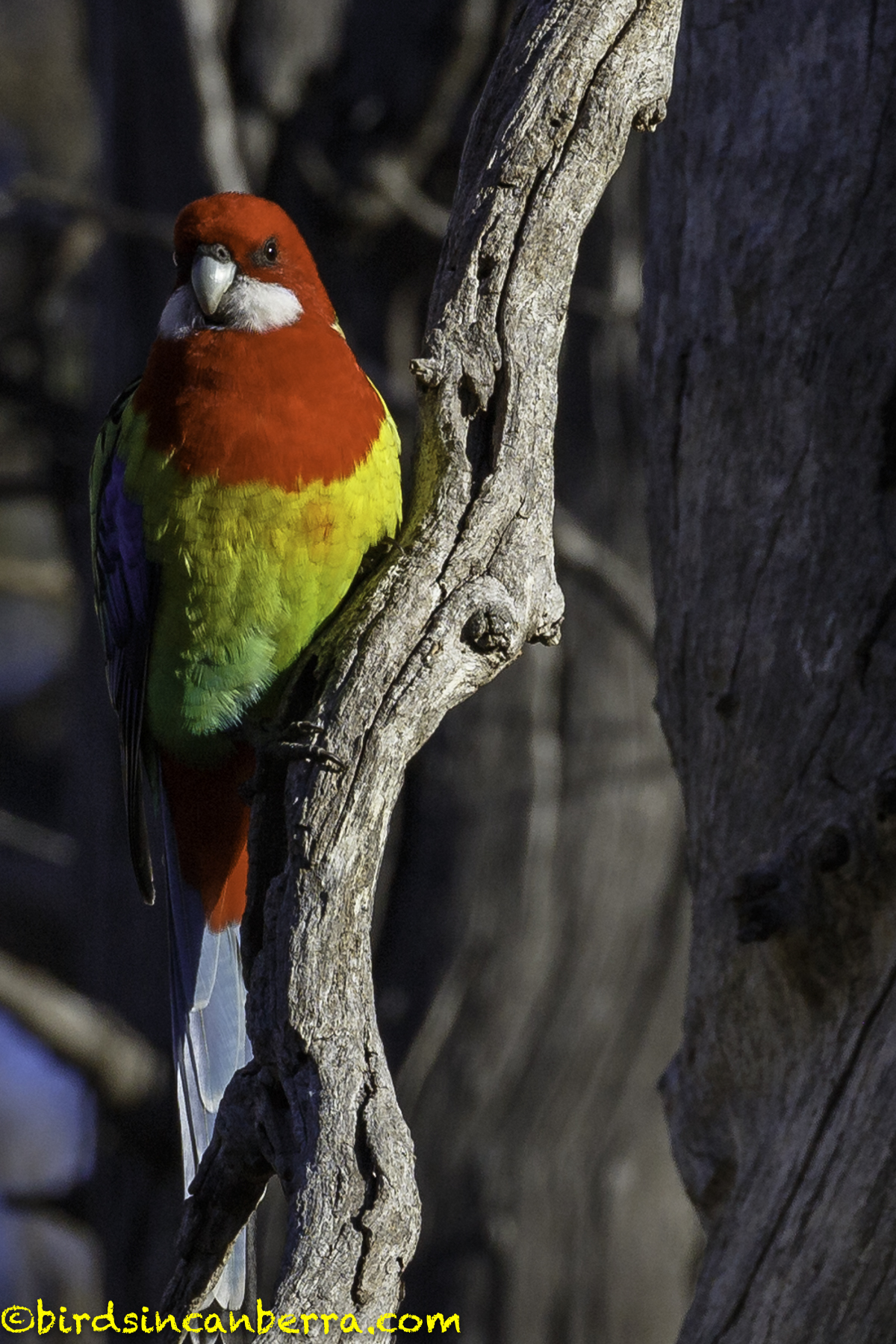I hopped in my car for the 15 minute drive to the Aranda Bushland Nature Reserve. It was an easy trip as google maps had already given me an idea of how to get there. It was slightly cold when I started walking, which was not surprising as the starting point was labelled as a 'frost hollow'. However, the walk warmed up as the sun rose. The bush also started to come alive with birds. I really had a lovely few hours wandering around in this bush setting just on the verge of Canberra city itself.
A panorama of Aranda Bushland Nature Reserve looking to the north-east taken on an iPhone
The first bird I really was able to photograph was a Sulphur-crested Cockatoo. Strangely, it was by itself in a tree. There were other cockatoos about but they were further away.
You cannot go too far in Australia without seeing an Australian Magpie. The one I photographed below was at the base of the tree where the cockatoo was. It was making its morning corralling while apparently keeping an eye on what was happening around it.
I was surprised at how many Common Starlings there were. These are introduced birds that I always saw as city dwellers, not as birds that would be found in the bush, even when it is so close to the city. They appeared to chase off one of the Eastern Rosellas and certainly one of them was also trying to eat something from the bark of the dead tree.
My attention was first drawn to this one particular dead tree by the colour I was presented with in what became the middle photo below of the Eastern Rosella. It was at the hollow in the dead tree, although it was not clear to me what it was doing there. However, its colour against the dullness of the tree stood out to me, causing me to focus on the tree, which became the centre of so much activity.
I think this dead tree was the 'one particular tree' that many birds wanted to have, including a group of Crimson Rosellas. There was initially a group of three Crimson Rosellas in the tree then some more turned up, leading to the first photo below. One bird kept chasing another around the tree. Another group also turned up producing the bottom photo. The birds kept making noise and challenging each other but it was hard to get a good photo as they tended to be in the shade behind the trunk.
I believe I only saw one female Australian Wood Ducks in the reserve's waterholes. The first time I saw her was in the smaller of the two waterholes I visited. The water level was down, with the water being very muddy. The Wood Duck was sharing this little bit of water with two Pacific Black Ducks. The Black Ducks flew off first while the Wood Duck stayed longer, allowing me to approach a bit closer before she flew off. It did not fly far, just to the larger waterhole. I did not quite nail the photograph of the duck in flight but I think I am getting better.
I believe these were the same two Pacific Black Ducks I referred to above who were originally in the smaller waterhole. They were swimming in the smaller waterhole as well as in this larger one.
Forgive my indulgence with all the photos below of these two Purple Swamphens but I really found them to be the stars of the day. I suspect these two may be a mating pair with the reeds under their feet the possible nesting site, although this is supposition on my part. What I have read is the nest consists of pushed down reeds so this may be what is occurring in this series of photos. Only the bird on the left actually had mud around its face, the bird on the right had a clean face. There was interesting action going on between the birds. In the fifth photo the bird on the left was almost supplicating itself to the bird on the right, where as in the final photo the left-hand bird appeared to be giving the right-hand bird a nip with its beak. This happened several times while I was watching them, although there was no reaction from the right-hand bird. I did not know if it was some mating or coupling act, or was it an attempt by the left-hand bird to hold down its mate while the right-hand bird was trying to bend the reed over.
Just off to the side of the waterhole was a dead tree stump that was the perfect location for an Australian Raven to perch itself. I love the glossy black plumage. It did not stay long but flew off very quickly. I tried to capture it in flight but it is just a little out of focus.
These White-winged Choughs were in a group that really looked somewhat like a herd of grazing dinosaurs. I heard them well before I saw them. They were almost a rolling mat of birds. They were under the shade of a tree making it hard to photograph. I was able to sneak a little bit closer to them but they did fly off quickly once I was too close for their comfort.
The final bird I saw was this single female Superb Fairy-wren. I heard its call and saw it fly into some shrubs that appeared dead. I was right on top of the shrubs as it continued to call. It must have been low down in the shrubs as I could not see it. Eventually it flew up onto a branch where it stayed momentarily, enabling me to photograph it, before it flew off. I am used to seeing these birds in a group but this one appeared to be on its own.






























